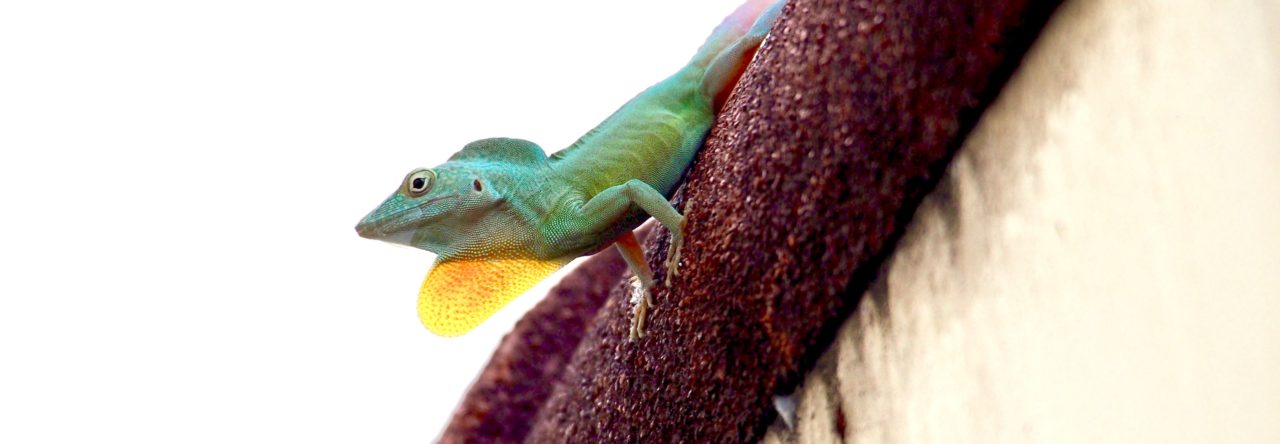Anolis cristatellus is a great study species for investigating the effects of urbanization. They are widely distributed across the island of Puerto Rico, and occur at high densities in both forests and urban areas. By comparing the morphology, behavior, and physiology of lizards in these two habitat types, a number of anole researchers are currently learning about the effects of urbanization on this species and how the species is responding to these novel environments.
Anolis cristatellus is also named for the huge, beautiful tail crests that males often possess. They are one of a number of anole species to possess a tail crest (25 of ~425 described species have crests), but the function of the crest is still unknown. One of the only studies addressing anole tail crest function suggests that they might be used for signaling across large distances (Charles & Ord 2012), but other possibilities have not been tested. We thought that temperature may play a role as well, with the tail crest allowing increased heat transfer between the anole and its environment (similar to mechanisms that have been proposed for the dorsal fans on Permian synapsids).
In our recent paper, we ( Kristin Winchell, Liam Revell and I) decided to study how these tail crests vary across Puerto Rico in urban and forested areas and test whether any variation we observe in crest morphology is associated with environmental variables that differ across these urban and forested habitats. To do this, we measured tail crest size across three populations using scans of lizard tails that I collected during my summer undergrad REU at UMass Boston many years ago. ‘Twas the first time I ever caught anoles! Sigh, memories…
We then tested whether tail morphology varied across our three sampled municipalities or across habitats types (urban and forest), and whether any observed variation was associated with temperature, precipitation, or openness (i.e. perch isolation).
We found that tail crest size does vary across the three populations, but in each locality we sampled, urban lizards had larger crests. Interesting! Why might that be ? Well, it turns out that the environmental factors we measured also differ between urban and forest areas. The urban areas we sampled have higher temperatures than the forest areas. The larger tail crests in urban areas could therefore suggest a potential thermoregulatory role. But that’s not the only possibility presented by our data. Urban habitats tend to be more open, which could allow for longer sight lines between individuals, potentially supporting the hypothesis that larger tail crests are used for communication in open environments. But so far, our conclusions are necessarily limited. Nonetheless, even though we don’t know the function of the crest, the fact that crest size differs between urban and forested areas suggests that it’s under some sort of differential selection in these different habitats, which is quite intriguing.
We hope this paper can be a part of a larger body of research around Anolis (and squamate) tail crest function and evolution. Quite a few species have crests, but very few have been studied. If you have tail crest data/pics lying around, I encourage you to get them out there! In the meantime, feel free to read our full paper here.













